Page 177 of 288

-Always follow the manufacturer's in
struct ions provided with the child safety
seat or infant carrier.
- Always m ove the front passenger seat in
to the rearmost position of the passen ger seat's f ore and aft adjustment range,
and as far away from the airbag as possi
ble before install ing the child restraint.
- Always make sure that noth ing prevents
the front passenger's seat from being moved to the rearmost position in its
fore and aft adjustment range.
- Always make sure the backrest is in an
upr ight position .
- Never place o r use any electrical device
(such as a laptop, CD player, electron ic
games dev ice, power inverter o r seat
heater for child se ats ) on the fr ont pas
senger se at if the device is connected to
the 12-vo lt socket or the cigarette light
er socket.
- If a seat heater has been retrofitted or
otherwise added to the front passenger
seat, never install any child restraint sys
tem on this seat.
- Make sure that there are no wet objects
(such as a wet towel) and no water or
other liquids on the front passenger seat
cushion.
- Never place objects on the seat (such as
a laptop, CD player, electronic games de
vice, power inverter or seat heate r for
child seats). These may influence the
elect rical capacitance measu red by the
capacit ive passenger detection system
and can a lso fly aro und in an accident
a nd cau se se riou s person al injury.
- Make sure that the
PASSENGER AIR BAG
OFF
lig ht comes on an d stays on all the
t ime whenever the ignition is switched
on .
- If the
PASSENGER AIR BAG OFF light
does not come on and s tay on, immedi
ately install the forward-facing child seat
at a seating posit ion on the rear seat and
have the a irbag system inspected by your
authorized Audi dealer. Child S
afety 175
- Ta ke the chi ld restraint off the front pas
senger seat and install it properly at one
of the rear seat positions if the
PASSEN
GER AIR BAG OFF
li ght does not stay on
whenever the ignit ion is switched on.
Booster seats and safety belts
Properly used booster seats can help protect
children weighing between about 40 lbs. and
80 lbs . (18 kg and 36 kg) who are less than 4
ft. 9 in . tall. 9 in . (57 inches/1 .45 meters)
tall.
F ig. 1 36 Rea r seat : ch ild p roperly res trained in a boos
ter seat
The vehicle's safety belts alone will not fit
most children until they are at leas t 4 ft . 9 in .
(57 inches/1.45 meters) tall and weig h about
80 lbs. (36 kg). Booster seats rai se t hese chi l
dren up so that the safety belt w ill pass prop
erly over the stronge r parts of the ir bodies
and t he safety be lt can he lp pro tect them in a
c rash .
.,. Do not use the convert ible lock ing retractor
when using the veh icle's safety be lt to re
strain a ch ild on a booster seat .
.. The s houlde r belt must lie as close to the
center of the chi ld's collar bone as possib le
and must lie flat and snug on the upper
body. It must never lie across the throat or
neck . The lap be lt must lie across the pelvis
and never ac ross the stomach or abdomen .
Mak e su re the be lt lies flat and sn ug. P ull on
the belt to tighten if necessary .
.,. If you must tra nsport an older c hild in a
booste r seat on the front passenger sea t, .._
Page 178 of 288

176 Child Saf ety
you can use the safety belt he ight adjust
ment to help adjust the shoulder portion
properly .
• Secure unused safety belts on the rear seat
¢ page 172.
Children up to at least 8 years old (over 40 lbs
or 18 kg) are best protected in chi ld safety
seats designed for their age and weight. Ex
perts say that the skeletal structure, particu
larly the pelvis, of these ch ildren is not fully
developed, and they must not use the vehicle
safety belts without a su itab le child restraint .
It is usually best to put these children in ap propriate booster seats. Be sure the booster
seat meets all applicable safety standards .
Booster seats raise the seating position of the
child and reposition both the lap and shoulder parts of the safety belt so that they pass
across the child's body in the right places. The routing of the belt over the ch ild's body is very
important for the child's protection, whethe r
or not a booster seat is used . Children age 12
and under must always ride in the rear seat.
C hil dren who are at least 4
ft. 9 in. (57 in
ches/1.45 meters) ta ll can generally use the
vehicle's th ree po int lap and shoulder be lts.
Never use the lap belt portion of the veh icle's
safety belt a lone to restrain any child, regard
less of how big the child is . Always remember
that ch ildren do not have the pronounced pe l
vic structure required for the proper function of lap belt portion of the vehicle's three po int
lap and shoulder belts. The child's safety ab
solutely requires that a lap belt portion of the
safety belt be fastened snugly and as low as possib le around the pelvis. Never let the lap
be lt portion of the safety belt pass over the
chi ld's stomach or abdomen.
I n a crash, airbags must inflate within a b link
of an eye and with cons iderab le force. In orde r
to do i ts job , the airbag needs room to inflate
so that it will be there to protect the occupant
as the occupant moves forward into the air bag.
A vehicle occupant who is o ut of position and
too close to the airbag ge ts i n the way o f an inflating airbag. When an occ
upant is too
close, he or she will be st ruck violently and
will rece ive serious or possib ly even fatal in
j ury.
In order for the airbag to offer protection, it is
important that a ll vehicle occupants, especial
l y any children, who m ust be in the front seat
because of exceptiona l circumstances, be
properly restrained and as far away from the
airbag as possible . By keeping room between
the ch ild's body and the front of the passen
ger compa rtment, the a irbag can inflate com
pletely and p rov ide supplementa l protection
i n certain frontal collisions.
A WARNING
N ot using a booste r seat, using the boos
ter seat improperly, incorrectly installing a booster seat or using the vehicle safety
belt improperly increases the risk of seri
ous persona l injury and death in a collision
or other emergency situat ion. To he lp re
duce the risk of serious personal injury
and/or death:
- The shou lder belt must lie as close to the
center of the ch ild's collar bone as possi
b le and must lie flat and snug on the up
pe r body.
It must neve r lie across the
throat or ne ck. The lap belt mus t lie
across the pe lvis and neve r ac ross the
stomach or abdomen . Make sure that the
be lt lies flat and snug. P ull on the belt to
tighten if necessary .
- Fai lure to p roperly ro ute safety belts
over a child's body will ca use seve re in ju
ries in an accident or other emergency
situation ¢
page 131.
-The rear side o f the child safety seat
should be pos itioned as close as possib le
to the backrest on the vehicle seat.
- For ad justab le head restraints: adjust or
remove the rear seat head restra int if it
is difficult to install the child seat w ith
the head restraint in place¢
page 55. In
stall the head restraint again immed iate-
ly once the child seat is removed. Dr iv ing
Ii),
Page 179 of 288

without head restraints or with head re
straints that are not pr operly ad justed
increases the risk of ser ious or fatal neck
injury dramat ically .
- Children on the front seat of any car,
even with Advanced A irbags, can be seri
ously injured or even killed when an a ir
bag inflates .
- Never let a child stand or knee l on any
seat, for example the front seat.
- Never let a child ride in the cargo area of
your vehicle .
- Always remember that a ch ild lean ing
forward, sitt ing s ideways o r out of posi
t ion i n any way during an acc ident can be
st ruck by a deploying airbag . This will re
s u lt in se rious personal injury or death.
- If you must install a booster seat on the
front passenger seat because of excep
tio nal circumstan ces the
PASSENGER
AIR BAG OFF
light must come on and
stay on, whenever the igni tion is switch
ed on .
-If the PASSENGER AIR BAG OFF light
does not come on and s tay on, per form
the checks described ¢
page 152, Moni
toring the Advanced Airbag System.
- Take the child rest raint off the front pas
senger seat and install it proper ly at one
of the rear seat positions if the
PASSEN
GER AIR BAG OFF
light does not stay on
whenever the ignition is switched on.
- Always read and heed all WARNINGS whenever using a child restrained in ave
hicle is bei ng used ¢
page 131 , Safety
belts, ¢ page 140, Airbag system
and
¢page 166, Important things to know .
Child Safet y 177
Installing a child safety
seat
Securing a child safety seat using a
safety belt
Safety belts for the rear seats and the front
passenger con be locked with the convertible locking retractor to properly secure child
safety sea ts.
T he safety belts emergency locking retractors
fo r the rear seats safety belts and for the
front passenger's seat safety belt have a con
vertib le locking retractor for child restraints.
The safety belt must be locked so that be lt
webb ing cannot unreel. The retractor can be
activated to loc k the safe ty belt and prevent
t h e safety be lt webb ing from looseni ng up
dur ing no rm al driv in g. A ch ild safety seat can
o nl y be prope rly installed w hen t he s afety bel t
is locked so that the chi ld and child sa fety
seat w ill stay in place.
A lways remember: Even tho ugh yo ur vehicle is
equipped wi th an A dvanced Airbag sys tem, all
c hi ldren, es pecially those 12 years and young
er, sho uld always r ide in the back seat proper
l y restra ined for t he ir age and size.
A WARNING
Im properly installed chi ld safety seats in
crease the risk of serious personal injury
a n d death in a co llision .
- Always make sure that the safety belt re
tractor is locked w hen insta lling a child
safety seat. An unlocked safety belt re
trac to r cannot hold the child safety seat
in place dur ing norma l dr iving o r in a
crash.
- Always buckle the child safe ty seat firmly
i n place even if a ch ild is not sitt ing in it.
A l oose child safe ty se at can fly aroun d
du ring a sudden stop or in a collision.
- Always ma ke sure tha t the rear seat
b ackrest to which the ce nter re ar safe ty
be lt * is attache d is se curely latched
wheneve r the rea r cente r safety belt is
be ing used to secure a child rest raint .
•
•
•
Page 180 of 288

178 Child Safety
-If the backrest is not securely latched,
the child and the child restraint will be
thrown forward together with the back
rest and will strike parts of the vehicle
interior. The child can be seriously in
jured or killed.
- Never install rear -facing child safety
seats or infant carriers on the front pas
senger seat. A child will be seriously in
jured and can be killed when the passen ger airbag inflates.
- The inflating airbag will hit the child
safety seat or infant carrier with great
force and will smash the child safety seat
and child against the backrest, center
armrest, door or roof.
- Always install rear-facing child safety
seats or infant carriers on the rear seat.
- Forward-facing child safety seats or in
fant carriers installed on the front pas
senger's seat may interfere with the de
ployment of the airbag and cause serious
injury to the child.
- It is safer to install a forward-facing
child safety seat on the rear seat.
- Always read and heed all WARNINGS
whenever using a child restrained in ave
hicle is being used¢
page 166. Special
precautions apply when installing a child
safety seat on the front passenger seat
¢ page 142, Child restraints on the front
seat -some important things to know .
A WARNING
-
Always take special precautions if you
must install a forward or rearward-facing
child restraint on the front passenger's
seat in exceptional situations:
- Whenever a forward or rearward-facing
child restraint is installed on the front
passenger seat, the
PASSENGER AIR
BAG OFF
light must come on and stay on
whenever the ignition is switched on.
- If the
PASSENGER AIR BAG OFF light
does not come on and stay on, perform
the checks described ¢
page 152, Moni
toring the Advanced Airbag System.
- Take the child restraint off the front pas
senger seat and install it properly at one
of the rear seat positions if the
PASSEN
GER AIR BAG OFF
light does not stay on
whenever the ignition is switched on.
- Improper installation of child restraints
can reduce their effectiveness or even
prevent them from providing any protec
tion .
-An improperly installed child restraint can interfere with the airbag as it de
ploys and seriously injure or even kill the
child.
-Always carefully follow the manufactur
er's instructions provided with the child
safety seat or carrier.
- After checking to make sure that the
child restraint is properly installed, make
certain that the child restraint is correct ly recognized by the capacitive passenger
detection system in the front passenger
seat and that the
PASSENGER AIR BAG
OFF
light signals the correct front pas
senger frontal airbag status.
A WARNING
-Forward-facing child restraints:
- Always make sure the forward-facing seat has been designed and certified by
its manufacturer for use on a front seat
with a passenger front and side airbag.
- Never put the forward-facing child re
straint up, against or very near the in
strument panel.
- Always move the passenger seat into its
rearmost position in the seat's fore and
aft adjustment range, as far away from
the airbag as possible before installing
the forward-facing child restraint. The
backrest must be adjusted to an upright
position.
- Make sure that the
PASSENGER AIR BAG
OFF
light comes on and stays on all the
time whenever the ignition is switched
on.
Page 181 of 288

A WARNING ,~
Rearward-facing ch ild restraints:
-A chi ld in a rearward-facing child safety
seat installed on the front passenger
seat will be ser iously injured and can be
killed if the front airbag inflates -even
with an Advanced Airbag System .
- The inflating a irbag w ill hit the child
safety seat or infant carrier w ith great
force and w ill smash the ch ild safety seat
and child against the backrest, cente r
armrest, door or roo f.
- Always be especially caref ul if you must
install a rearwa rd fa cing child safety seat
on the front passenge r sea t in exception
al circumstances .
- Make su re that the
PASSENGER AIR BAG
OFF
light comes on and s tays on all the
time whenever the ignition is switched
on .
- If the
PASSENGER AIR BAG OFF light
does not come on and stay on, immedi
ately install the rea r-facing chi ld safety
seat in a rear seating position and have
the a irbag system inspected by you r Audi
dealer.
Activating the convertible locking retractor
Use the convertible locking retractor to se
cure a child restraint.
Always heed the child safety seat manufactur
er's instructions when install ing a chi ld re
straint in your vehicle . To activate t he conver
tible locking retracto r:
.,. Place the child restraint on a seat, prefera
bly on the rear sea t.
.,. Slow ly pull the be lt
all the way out .
.. Route it around or through the ch ild re
st ra int be lt path ¢&, .
.,. Push the child safety seat dow n with your
f ull weight to ge t the safety belt really t ight.
.,. Insert the be lt tongue into the buckle for
that seating position .
Child Safet y 1 79
.,. Guide the sa fe ty be lt back into the retractor
until the be lt lies flat and sn ug on the child
safety seat .
.,. You shou ld hear a "clicking" noise as the
be lt winds back into the iner tia ree l. Test the
convert ible lock ing retractor by pulling on
the belt. You sho uld no lo nger be able to
pull the be lt out of the retracto r. T he con
ver tible locking re trac to r i s now ac tiva ted .
.,. Mak e s ure t hat t he red release b utton is fac
ing away from the child rest rain t so t hat i t
can be unbuckled q uic kly .
.. Pull on the belt to make sure the safety be lt
is properly tight and fastened so that the
seat cannot move forward or sideways more
than one inch (2 .5 cm).
A WARNING
Using the wrong child restraint o r an im
p roperly installed chi ld restraint can cause
serious pe rsonal injury or death in a crash.
- Always ma ke sure that the safe ty belt re-
tracto r is loc ked when insta lling a child
safety seat. An unlocked safety belt re
tracto r can not hold the child safety seat
in place dur ing no rma l driving o r in a
cras h.
- Always buckle the child sa fe ty seat firmly
in place even i f a ch ild is not sitt ing in it.
A loose child safety seat can fly aroun d
during a sudden stop or in a crash .
- Always ma ke s ure the seat backrest to
which the child restraint is installed is in
an upright pos ition and securely latched
into place and can not fold forward . Oth
erw ise, the seatback with the child safety
seat attached to it could fly forward in
the ev ent of an accident o r othe r emer
gency situatio n.
- Always read a nd heed al l WAR NINGS
wheneve r us ing a child restrained in ave
hicle is being used ¢
page 166. Special
pre cau tions apply whe n inst alling a child
safety sea t on the fron t passenger seat
¢ page 142, Child restraints on the front
seat -some important things to know.
-
•
•
•
Page 182 of 288

180 Child Saf ety
Deactivating the convertible locking
retractor
The convertible locking retractor for child re
straints will be deactivated automatically when the belt is wound all the way back into the retractor .
.,. Press the red button on the safe ty belt buck
le. The be lt tongue w ill pop out of the buck
le .
.. Guide the safety be lt all the way back into
its stowed position .
A lways le t the safety bel t retract comp lete ly
into its stowed posit ion . The sa fety belt can
now be used as an ordinary safety belt with
out the convert ib le locking ret ractor for chi ld
restra ints.
If the convertible locking retracto r shou ld be
activated inadvertently, the safety belt m ust
be unfastened and guided comp letely back in
to its stowed pos ition to deactivate th is fea
ture. If the convertib le locki ng retractor is not
deactivated, the safety be lt will gradually be
come tighter a nd u ncomfo rtable to wea r.
A WARNING
Imprope rly insta lled child saf ety seats in
crease t he risk of ser ious personal inju ry
a n d death in a collision .
- Never unfaste n the safety belt to deacti
vate the convert ible lo cking re tr actor fo r
ch ild rest rain ts while the veh icle is mov
ing. You would not be res trained and
cou ld be seriously injured in an accident.
- Always re ad and heed all WARN INGS
whenever using a child rest rained in ave
hicle is being used¢
page 166. S pecial
precautions apply when installing a ch ild
safety seat on the front passenge r seat
¢ page 142, Child restraints on the front
seat -some important things to know.
LATCH Lower
anchorages and tethers
for children
Child Restraint System anchors and how
are they related to child safety
T o p rov ide a simple r and more practicable way
to a ttach the child restra int on t he vehi cle
sea t, Federal regulat ions re quire spe cial lowe r
anchorages in vehicles and devices on new
c h ild restraints to attach to the vehicle ancho
rages.
T he comb inat io n of th e tether anc horages and
the lowe r anchorages is now genera lly c alled
t h e
LATCH system fo r "Lower Anchorages and
T ethers for Child ren."
F o rward-f ac ing ch ild res trai nts ma nufacture d
after September 1, 1999, are req uired by U .S .
f ede ra l regu lations to comply with new child
head movement performance req uirements.
These new performance req uirements make a
tether necessary on most new child seats.
Installing a child restraint that requires a top
tethe r without one can seriously impair the
performance of the c hild restra int and its abil
ity to protect the child in a coll is ion. Insta lling
a chi ld restrai nt that requires a top tether
without the top tether may be a violat ion of
state law.
Child rest raint manufacturers offer LATCH
lower anchorages on their child seats w ith
hook-on or push-on connectors attached to
adjustable straps .
In add ition to the LATCH lower anchorages,
t h ese chi ld restraint systems usually require
t h e use of tethe r straps to he lp keep the ch ild
rest raint fi rmly in place.
A WARNING
-Imp roper installat ion of ch ild restra ints
will i ncrease the r is k of injury a nd dea th i n
a cr ash.
-
Page 183 of 288

-Always follow the instructions provid ed
by the manufacturer of the ch i Ld re
straint you intend to install i n your veh i
cle .
- Never install a child restraint without a
properly attached top tether strap if the
child restraint manufacturer's inst ruc
t ions requ ire the top tether strap to be
used .
- Improper use of ch ild restra int LATCH
lower anchorage points can lead to injury
in a collis ion. The LA TCH lower anchorage
points a re des igned to w ithstand only
those loads imposed by correct ly fit ted
child restraints.
- Never mou nt two chi ld restraint systems
on one LA TCH lower anchorage point .
- Never secure o r attach any luggage or
other i tem to the LATC H lower anchorag
es .
{i) Tips
-In Canada , the terms "top tether " with
"lowe r universa l anchorages " (or "lowe r
universa l anchorage bars") are used to
desc ribe the system .
- In ot her countries, the term "ISO FIX " is
u sed to describe the lower anchorages .
Location
Fig . 137 Sch ematic overv iew : LA TCH an cho rage point
l o ca tion s
> 0)
"'
The illustration shows the seating locations in
your veh icle which are equ ipped w ith the low
e r anchorages system.
Child S afety 181
Description
The lower anchorage positions are marked
for quick locating .
Fig . 1 38 Lower an chor ag es, cove rs mar ked
Fig. 139 Re ar s eats: low er an cho rage bra cket lo ca tion s
Low er anchorag es
The circular markings on the rear seat he lp
you to ident ify the location of lower ancho rag
es for the two outboard seating posi tions
¢ fig . 138. The LATCH lower universal anchor
age attachm ent points are b etween the rear
seatback and rear seat cush ion .
R emove the covers ¢
fig. 138 to access the
lower anchor age attachment points .
T he lower anc ho rage attachment po ints are
vis ible ~
fig. 139.
Lower anchorage s secure the chi ld rest rai nt in
the seat without using the vehicle's safety
belts . Anchorages provide a secure and easy
to-use attachment and minimize the possibili
ty of improper child restra int installa tion.
All child restraints manufactured after Sep
tember 1, 2002 , m ust have lower anchorage
attachments for the
LATCH system.
Please remembe r that the lower anchorage
poin ts are only intended for installat ion and
Iii>
Page 184 of 288

182 Child Saf ety
attachment of child restraints specifically cer
tified for use with
LATCH low er anchorages.
Ch ild restra ints that are not equipped with the
lower anchorage attachments can still be in
stalled in comp liance with the child restrain t
manufacturer's instruct ions on using vehicle
safety belts .
A WARNING
Improper use of LATCH lower anchorages
can ca u se serio us pe rsonal inju ry i n an ac
c ident .
- Always ca refully fo llow the c hild re
st raints manuf acturer's inst ru cti ons for
proper ins tallat ion of the child rest rain t
and proper use of the lowe r anchorages
or safety be lts in your vehicle .
- Never secure or attach any l uggage or
other items to the
LATCH lower ancho
rages.
- Always read and heed the impor tant in
format ion about child restraints in this
chapter and WARNINGS
<=> page 166 ,
Child Safety.
Installing a child restraint with LATCH
lower anchorages
Whenever you install a child restraint always
follow the child restrain t manufacturer's in
structions .
Fig. 14 0 Lower a nch orage s: p roper mou ntin g
Mounting
.. Make sure the seatback of the rear seat
bench is in the upr ight position and se curely
l atched in place.
.. At tach both hook -on con nectors w ith the
spring catch release on the child safety seat onto the LATCH lower anchorage so that the
connectors
lock into place¢
fig. 140 .
.. Pull on the connector attachments to ma ke
sure they are properly attached to the LATCH lower anchorage .
.. Pull straps tight fo llow ing the child restraint
manufacturer's instruct ions .
Releasing
.. Loosen the tension on the straps following
the child restra int manufacturer's instruc
tions.
.. Depress the spri ng catches to release the
anchorage hooks from the lowe r anchorag
es .
Remember: Use tether straps to help keep the
c h ild restra int firm ly in place .
A WARNING
--Improper use of the LATCH system ca n in -
crease the risk of serious pe rsonal injury
a nd dea th in a n accident.
- T hese anchors were deve loped only for
chi ld safety seats using the "LATCH" sys
tem.
- Neve r attach othe r chil d safety seats,
be lts or o ther object s to these ancho rs.
- Always make sur e that you hear a c lick
when latch ing the seat in p la ce. If you do
no t hear a click t he se at i s not se cure and
could fly forwa rd and hit the in ter ior of
the vehicle, or be ejected from the veh i
cle.
A WARNING ~
Improper installat ion of child restra ints
will increase the risk of in jury in an acci
dent.
- Always follow the chi ld restraint system
manufacturer's instruct ions for proper
installation of the c hild restra int system
a nd p roper use of tether straps as well as
the lower a nchorages or safety belts in
your veh icle.
- Always read a nd heed t he importa nt in
formation and WARNINGS about ch ild
safety and the insta llation of ch ild
-
 1
1 2
2 3
3 4
4 5
5 6
6 7
7 8
8 9
9 10
10 11
11 12
12 13
13 14
14 15
15 16
16 17
17 18
18 19
19 20
20 21
21 22
22 23
23 24
24 25
25 26
26 27
27 28
28 29
29 30
30 31
31 32
32 33
33 34
34 35
35 36
36 37
37 38
38 39
39 40
40 41
41 42
42 43
43 44
44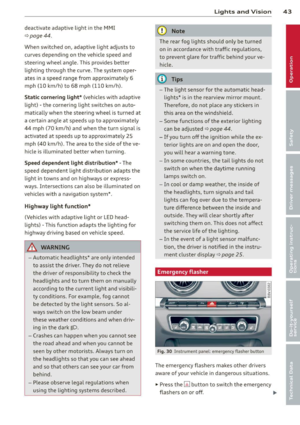 45
45 46
46 47
47 48
48 49
49 50
50 51
51 52
52 53
53 54
54 55
55 56
56 57
57 58
58 59
59 60
60 61
61 62
62 63
63 64
64 65
65 66
66 67
67 68
68 69
69 70
70 71
71 72
72 73
73 74
74 75
75 76
76 77
77 78
78 79
79 80
80 81
81 82
82 83
83 84
84 85
85 86
86 87
87 88
88 89
89 90
90 91
91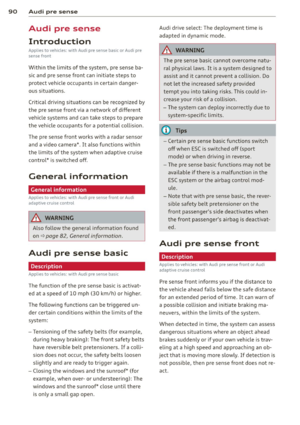 92
92 93
93 94
94 95
95 96
96 97
97 98
98 99
99 100
100 101
101 102
102 103
103 104
104 105
105 106
106 107
107 108
108 109
109 110
110 111
111 112
112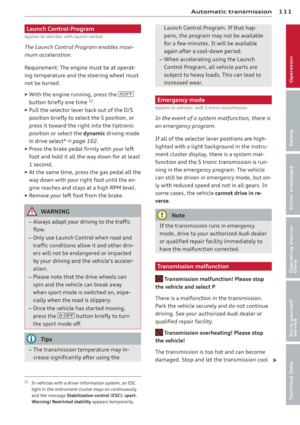 113
113 114
114 115
115 116
116 117
117 118
118 119
119 120
120 121
121 122
122 123
123 124
124 125
125 126
126 127
127 128
128 129
129 130
130 131
131 132
132 133
133 134
134 135
135 136
136 137
137 138
138 139
139 140
140 141
141 142
142 143
143 144
144 145
145 146
146 147
147 148
148 149
149 150
150 151
151 152
152 153
153 154
154 155
155 156
156 157
157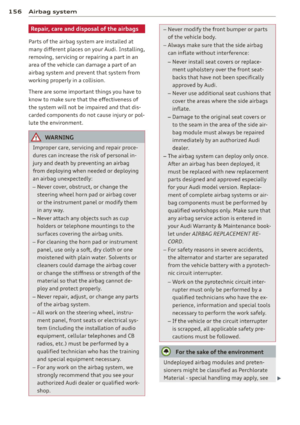 158
158 159
159 160
160 161
161 162
162 163
163 164
164 165
165 166
166 167
167 168
168 169
169 170
170 171
171 172
172 173
173 174
174 175
175 176
176 177
177 178
178 179
179 180
180 181
181 182
182 183
183 184
184 185
185 186
186 187
187 188
188 189
189 190
190 191
191 192
192 193
193 194
194 195
195 196
196 197
197 198
198 199
199 200
200 201
201 202
202 203
203 204
204 205
205 206
206 207
207 208
208 209
209 210
210 211
211 212
212 213
213 214
214 215
215 216
216 217
217 218
218 219
219 220
220 221
221 222
222 223
223 224
224 225
225 226
226 227
227 228
228 229
229 230
230 231
231 232
232 233
233 234
234 235
235 236
236 237
237 238
238 239
239 240
240 241
241 242
242 243
243 244
244 245
245 246
246 247
247 248
248 249
249 250
250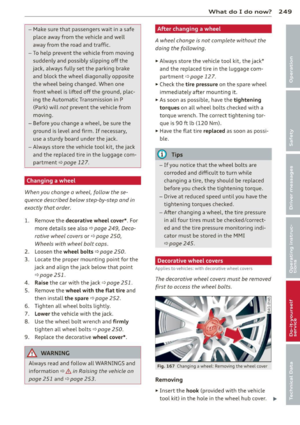 251
251 252
252 253
253 254
254 255
255 256
256 257
257 258
258 259
259 260
260 261
261 262
262 263
263 264
264 265
265 266
266 267
267 268
268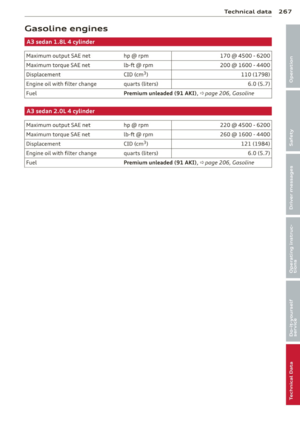 269
269 270
270 271
271 272
272 273
273 274
274 275
275 276
276 277
277 278
278 279
279 280
280 281
281 282
282 283
283 284
284 285
285 286
286 287
287






